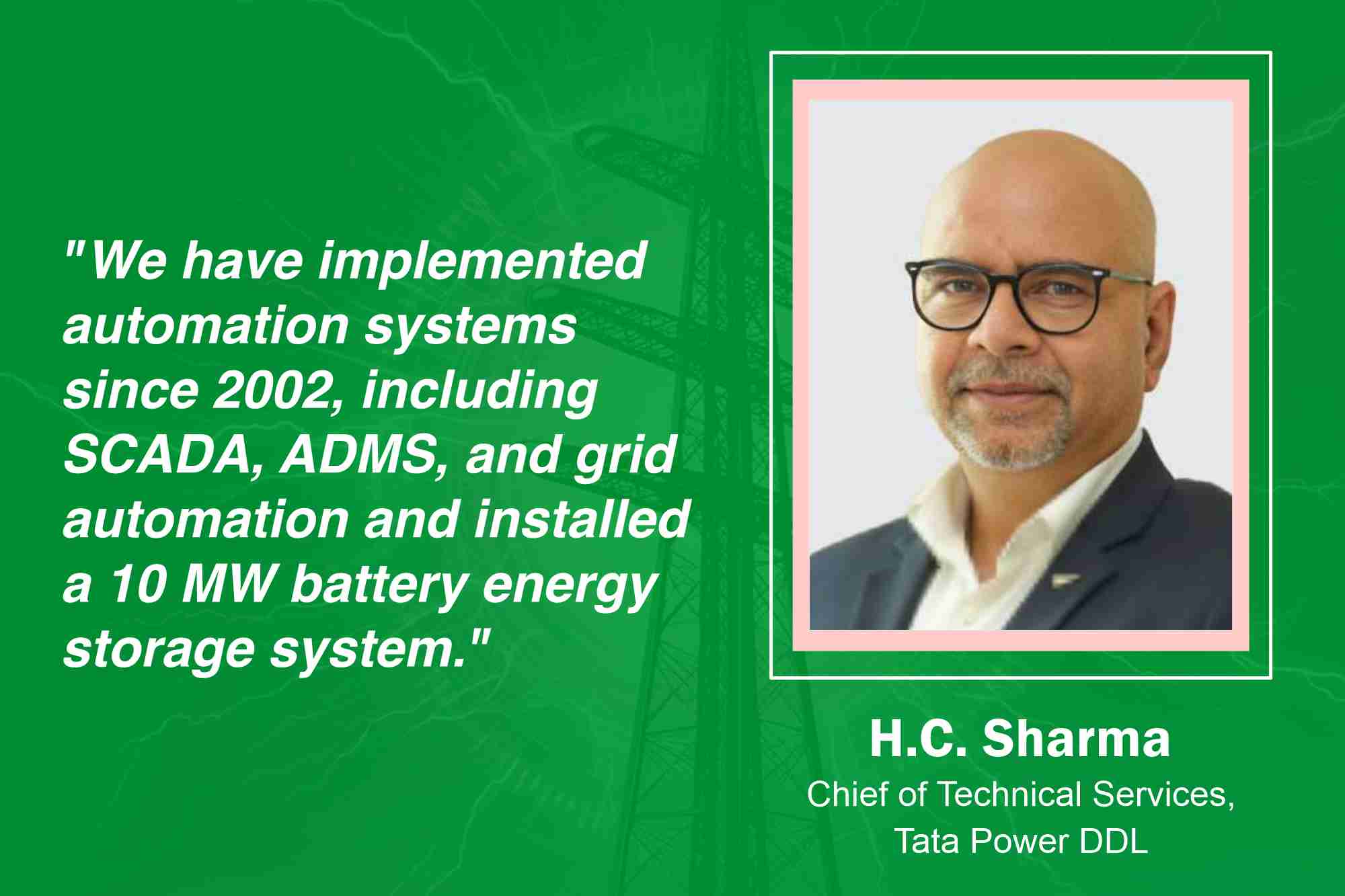Tata Power DDL advances energy management with cutting-edge automation
By EPR Magazine Editorial July 25, 2024 5:04 pm IST
By EPR Magazine Editorial July 25, 2024 5:04 pm IST

The company has implemented automation systems since 2002, including SCADA, ADMS, and grid automation. It has also installed a 10 MW battery energy storage system.
H.C Sharma, Chief of Technical Services- Tata Power DDL
The technology journey of Tata Power DDL commenced in 2002 and has evolved significantly over the years. Automation and digital transformation are ongoing, characterised by multiple phases and continuous enhancements.
The company operates extensively in the North and Northwest regions of Delhi, covering an area of approximately 510 square kilometres and serving a substantial customer base of 2.04 million. As of March 24, AT&C’s loss stands at 5.96 per cent.
Phases of automation
The initial phase of grid operations involved manual operations and monitoring equipment status across sites. From 2005 to 2010, Tata Power DDL implemented the Supervisory Control and Data Acquisition (SCADA) system, enabling centralised control and real-time monitoring. The company has currently integrated the Advanced Distribution Management System (ADMS), enabling comprehensive grid control without manual intervention.
Distribution system automation covers around 40 percent of 11 KV systems, including motorised Ring Main Units (RMUs). This automation allows quick isolation and reconnection during faults, significantly reducing downtime.
Low Voltage (LV) systems have traditionally lagged in automation globally. Collaborating with business associates, Tata Power DDL have installed Low Voltage automation devices, enabling effective monitoring and real-time actionable alerts. This initiative has automated around 500 substations, utilising cloud-based data analysis for enhanced system efficiency.The company has nearly completed grid automation at the 66 by 33 KV level, with 40 per cent of systems at 11 KV, and Low Voltage automation commenced three years ago. The grids are equipped with thermal and normal cameras and a portal internal security system, enhancing monitoring and control capabilities. Internet of Things (IoT)-based systems collect extensive data for accurate fault analysis, proactive maintenance, and identifying fault causes, facilitating action plans and solutions.
Monitoring distribution transformers is crucial due to their exposure to harsh weather conditions. The company has developed an innovative solution by leveraging existing meters and Radio Frequency (RF) communication systems to collect and transmit transformer data. This approach has proven cost-effective and significantly reduced transformer failures.
Battery energy storage systems
Tata Power DDL has installed a 10 Mega Watt battery energy storage system, which the company is expanding. These systems offer multiple benefits, including peak load management, dynamic load behaviour adjustment, frequency regulation, and energy arbitrage. The latter involves charging batteries during low-cost periods and discharging during high-cost periods, optimising energy usage and cost-efficiency.
Despite high initial costs, the company is optimistic about the future of battery systems. As costs decrease, these systems will play a vital role in utilising solar power efficiently, particularly at night. The journey of Tata Power DDL reflects a relentless pursuit of innovation and efficiency in energy management, with a steadfast commitment to leveraging technology for enhanced service delivery and sustainability.
We use cookies to personalize your experience. By continuing to visit this website you agree to our Terms & Conditions, Privacy Policy and Cookie Policy.